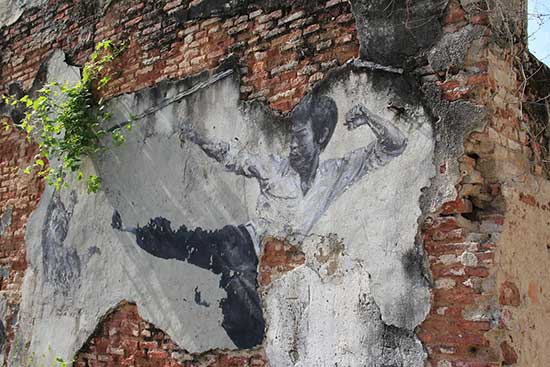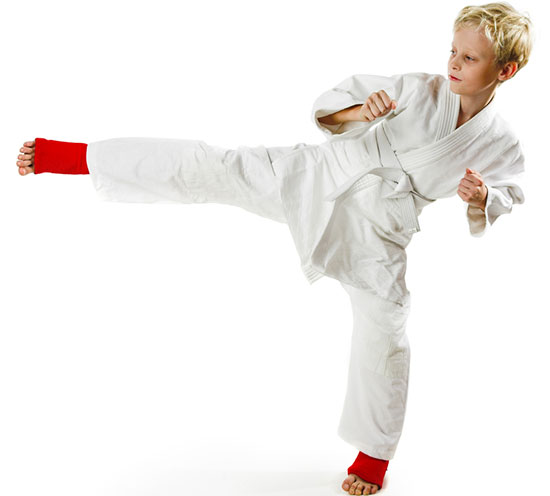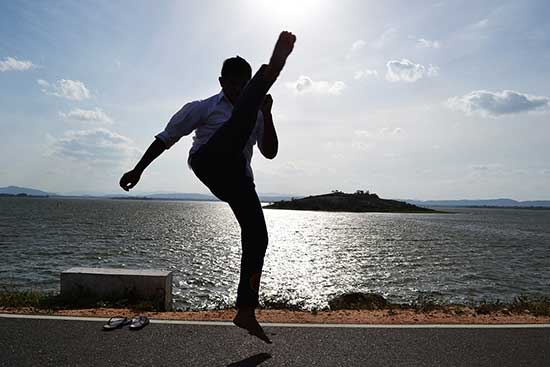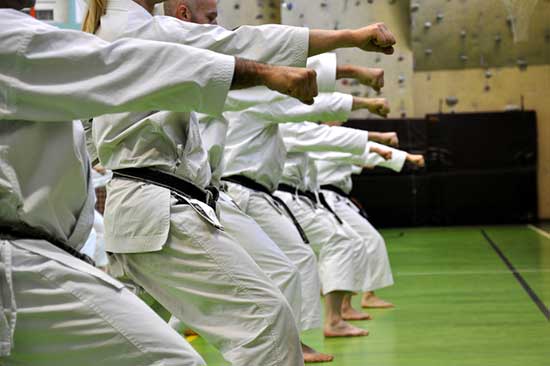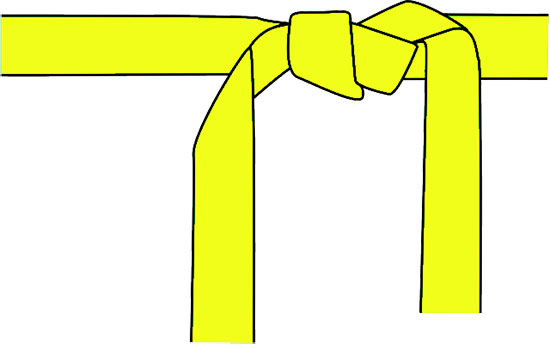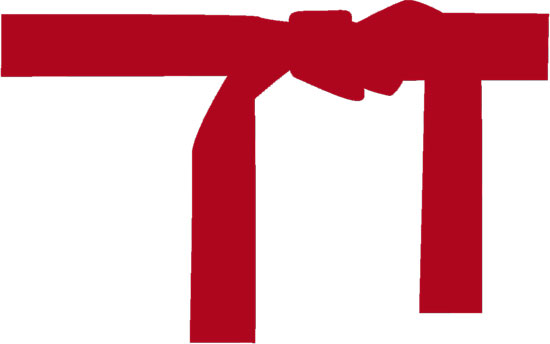A martial art characterized by technical fighting styles. Students are needed to grasp each Goju Ryu karate technique successfully for them to reach the required level.
Upon grasping a particular technique, a student is awarded a special belt according to the level of training.
To ensure students’ training in Goju Ryu karate perfects skill grasping, there is a syllabus that takes learners through belt grades.
Contents
Goju Ryu karate belt rankings
The completion of the Goju Ryu karate syllabus at each particular level is tested, just like how other forms of education do test the objective of the lessons.
Practitioners must demonstrate skills taught at a specific level before grading to the next one.
Goju Ryu karate organizations often test and award practitioner ranks based on two broad categories: kyu or lower belt rankings and dan or black belt rankings. In the kyu ranking, three categories exist; green, brown, and white.
The brown and green subcategories are identified by the stripes of the next highest color. This includes brown stripes for green belts and black ones for brown belts.
Initially, upon attainment of each category, the belts contain no stripes. However, the white belt features only a single rank for which the next highest category, devoted green, is included, 9th kyu.
The blue and yellow belts replace the stripes that would have been used in the white belt.
Black belts also have their ranks. However, apart from being used for teaching credentials (white stripe on red) and the tenth dan, which is read, there are no delineations in rank utilized to identify the practitioner level in belt order.
Goju Ryu belts
Ju (10th) Kyu white belt
This is a beginner level, and at this level, all belts are white. Here practitioners demonstrate basic knowledge and proficiency in the various activities: karate concept, warm-up exercises, motivation, and attitude.
Here learners master the mechanics of Geri, Sho Men Zuki, Jon dan uke, and GeDan uke. This belt requires attendance of about twenty for theory two classes that typically take about three to six months. The techniques learned here included chudan, zuki, Jordan Keri, and uke.
9th kyu -white with green stripe
This is the second rank in the Goju karate belt ranking. Practitioners here learn various techniques. The first one is the stances which include Zen kutsu dachi and Neko ashi dachi.
Blocks consist of Kake uke, Jo ge uke, and Chudan ude uke. The other techniques age the punches, which include ri ken Uchi, and shuto uchi. Lastly are the kicks consisting of mae Geri kekomi.
Besides, learners are expected to develop previously learned movements. Learners must learn for about three to six months to get the belt.
Hachi (8th) Kyu – Yellow belt
This is the third lowermost belt. Here learners learn stances, blocks, and kicks. The stances include Jo kutsu dachi, heir soku davhi, Hachi ji dachi, and musubi dachi.
Blocks include mawashi uke. Practitioners should also master punches like furi Uchi, hai to Uchi, hiji, Naka take ken. Kicks are also a must, like soku to gero, mawashi Geri, and Ushiro Geri. The duration is about three to six months
7th shichi Kyu – blue belt
At this level, the practitioners will learn katas, Gekisai Ichi, yakusoku kumite, gekisai ni, and zen when doing zuki or body-shifting exercises.
In each of the basic lessons, they will also master three techniques in each. Sparring without stance and freestyle sparring with a partner.
Practitioners who reach this level master knowledge of various techniques from pre-arranged sparring, actual freestyle sparring, body shooting, basics, and basic katas or forms.
6th Rok kyu – green belt
In the green belt, practitioners are expected to learn yakusoku, zen shin zuki, kata, and Saifa. In yakusoku, practitioners learn five prearranged techniques in each stance. It takes three to six months to master the skills and be given the belt.
5th go Kyu- Green belt with one brown stripe.
Here practitioners learn kata. In this, learn about Zen Shin Zuki, which will involve developing focus, strength, and concentration. It also takes the training of about three to six months to attain.
Purple(4th) Kyu
Requirements to attain this purple belt include attending training for a minimum of 12 weeks, being able to perform turning Sanchin, and demonstrating seiunchin sequence memorizing. Seiunchin kata should be good.
San (3rd) Kyu
Usually, Brown belt and practitioners should learn
Seiunchin, Kata, and demonstrate form, focus, strength, and good kata speed. Yakusoku kumite should also be learned by the student. Attendance of the class should be between 6 months to 1 year.
Ni (2nd) Kyu
The grading involves a brown belt with one stripe. A practitioner should be able to demonstrate yakusoku kumite/one-step variations. The learner should also practice seinchin and attend training for about 6 to 12 months.
Ichi (1st) Kyu
The awarding is always Brown belt two stripes. Testing done in this grading includes all basic techniques, basic karate knowledge, Yakusoku kumite, katas, and zen shin zuki moves. The testing should test training of 6 to 12 months
Black Shodan Belt
The Black Sjpdan belt is the highest belt ranking in Goju Ryu karate. This grading involves learning turning Sanchin kata, spirit and fitness testing( which involves performing 100 press-ups), and training for more than six months.
Conclusion
In Goju Ryu karate, the ranking system mainly used is the lower colored grades. All students begin their ranking with a white belt, which means that any beginner will only have a white belt. The ranks progress to yellow, green, brown, and, lastly, black.
Besides that, they will be ten black belt degrees. The ranking system offers an excellent tool for student organization according to skill level.
This ranking helps divide class or signal opponents of the difficulty level to be provided during sparring or contact drills or for offering specialized training.
For instance, the black belt would spar above their comfort zone and give them a challenge instead of a black belt level that would not teach anything to the yellow belt.
